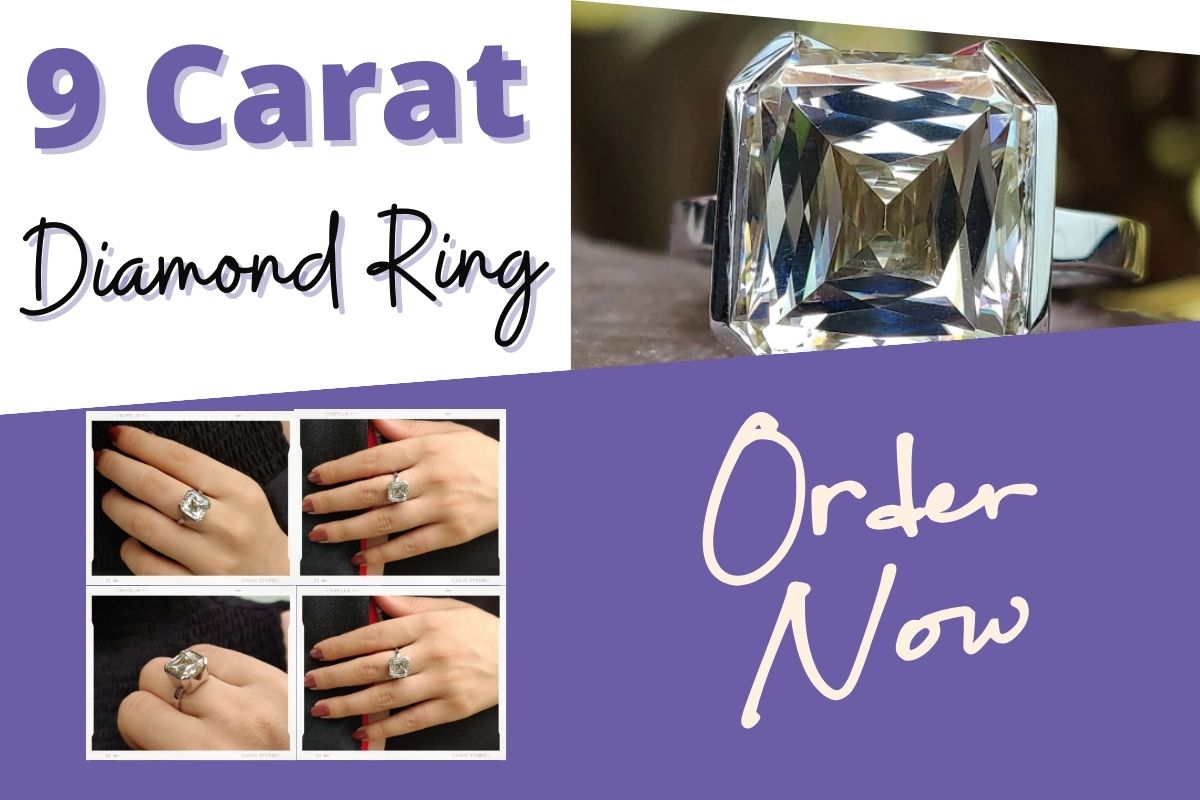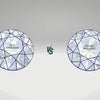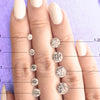
How Much is a 9 Carat Diamond Worth? Understanding Value
Determining the worth of a 9 carat diamond involves a complex interplay of factors. With my expertise in the gemstone market, I can guide you through the essentials.
As one of the larger gemstones available in the commercial jewelry market, a 9 carat diamond's value can vary significantly. The usual suspects contributing to its worth are the renowned 4 Cs—cut, color, clarity, and carat weight.
A perfectly cut 9 carat diamond with high clarity and a colorless grade embodies rarity and therefore will fetch a premium.
Table Of Contents
- Understanding Diamond Value
- The Significance of Certification
- How Diamond Prices Are Determined
- Factors Affecting 9 Carat Diamond Worth
- Purchasing a 9 Carat Diamond
- Types of Jewelry Featuring 9 Carat Diamonds
- Analyzing Diamond Grading Reports
- Unique Characteristics of 9 Carat Diamonds
- Expert Tips for Diamond Care and Maintenance
- Frequently Asked Questions
The price of a 9 carat diamond is not just a simple multiplication of its carat weight by a fixed per-carat price. The valuation process is nuanced; each individual diamond carries its own unique characteristics and intrinsic qualities.
For instance, two diamonds of the same carat weight can have starkly different values based on their cut quality, color, and clarity.
A flawless 9 carat stone can command prices reaching well into the hundreds of thousands, if not millions, whereas a diamond with inclusions or a lower color grade might be priced considerably less, despite its notable size.
When determining a 9 carat diamond's worth, industry insiders and experts will evaluate the stone in its entirety. They examine both its certifiable qualities and its more subjective appeals, such as the stone's brilliance and fire.
It's this complex evaluation that fascinates me and requires a deep understanding of the market. I stay current with wholesale and retail price trends to offer you an accurate depiction of what such a substantial diamond may be worth.
Remember, a diamond's value is not just rooted in its physical attributes, but in the symbolism and craftsmanship that it represents.
Understanding Diamond Value
When evaluating diamond value, I focus on its intrinsic characteristics that universally influence its worth. The core elements I consider are the 4 Cs of diamond quality—Cut, Color, Clarity, and Carat weight—each contributing in varying degrees to a diamond's overall value.
The 4 Cs of Diamond Quality

Cut Quality: The cut of a diamond profoundly affects its brilliance and is the most complex characteristic to analyze.
I take into account both the precision of the cut and the resulting light performance. A well-cut diamond reflects light internally from one facet to another and disperses it through the top of the gem, enhancing its sparkle.
Color Grade: I observe the diamond for its color, or lack thereof.
Diamonds are graded from D (colorless) to Z (light yellow). A colorless diamond, which falls in the D-F range, is typically more valuable than one with a slight yellow tint, as it reflects light more purely.
Clarity Grade: Clarity is assessed by identifying the number, size, relief, nature, and position of inclusions and blemishes.
Diamonds are classified from Flawless to Included. Those closer to Flawless have fewer inclusions and are more highly prized, correlating directly to their value.
Carat Weight: Carat refers to a diamond's weight, not its size. A higher carat weight signifies a larger diamond, which will usually have a greater value. However, the price does not increase linearly with weight.
For example, a 2-carat diamond will not typically cost double the price of a 1-carat diamond because of the rarity in finding larger stones of high quality.
Carat Weight and Its Impact on Price
The price per carat of diamonds rises exponentially with carat weight due to the rarity of larger, high-quality diamonds. Therefore, when comparing diamonds of the same quality, a 9-carat diamond will have a much higher total price than a 1-carat diamond.
However, my assessment always considers how carat weight interacts with the other 3 Cs since a larger diamond with inferior cut, color, or clarity may not be as valuable as a smaller diamond with superior characteristics.
Diamond Shapes and Value
Different shapes can impact diamond value, which is something I always relay to interested clients.
Round diamonds are often more expensive than fancy shapes like princess or cushion cut due to higher demand and the cutting process, which results in more rough diamond wastage.
The shape of a diamond can also affect how large it appears; some shapes like marquise or oval can appear larger than round diamonds of the same carat weight.
When determining value, I consider how the shape interacts with a diamond's cut quality to influence its brilliance and appeal.
The Significance of Certification
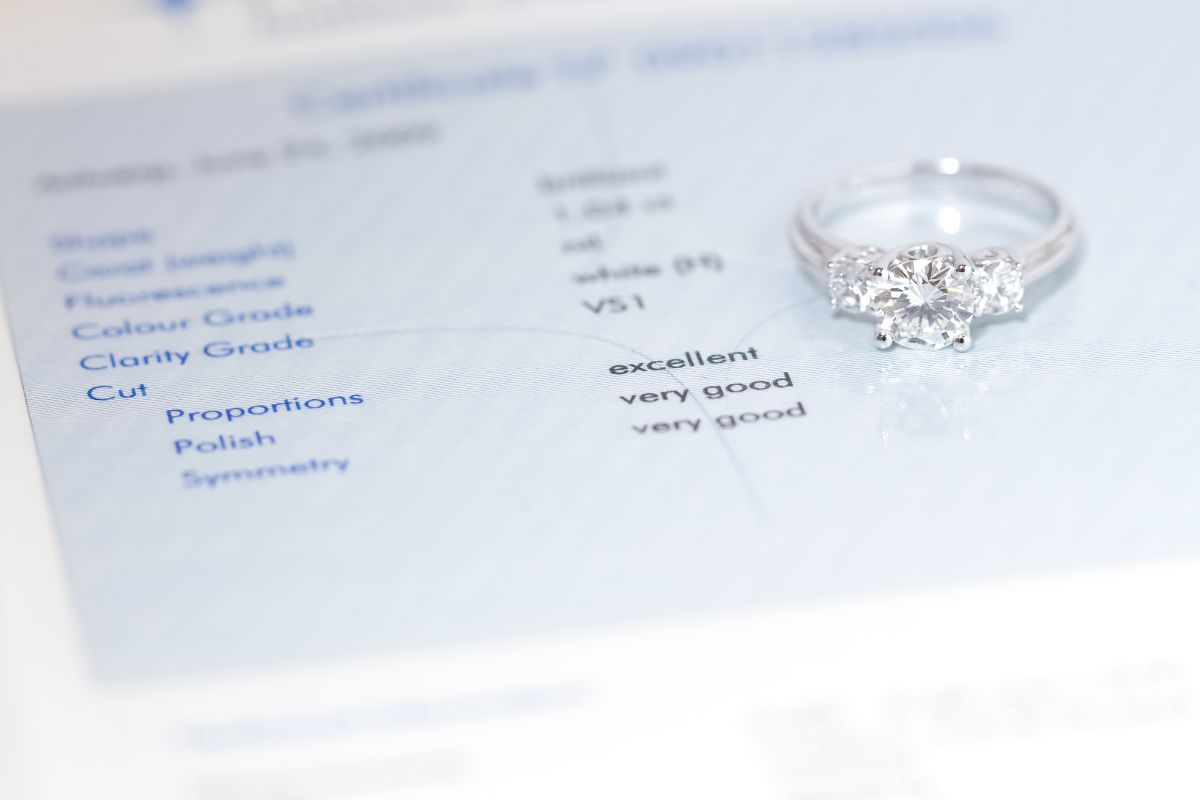
When purchasing a 9 carat diamond, I know that the certification it holds essentially defines its value, authenticity, and quality. A certificate acts as a blueprint, providing a clear report about the diamond's characteristics.
GIA Certification and Its Importance
GIA, or the Gemological Institute of America, stands at the forefront for diamond certification.
I understand that a GIA certificate guarantees that a diamond has been thoroughly evaluated by experts in gemology.
My scrutiny of such certificates shows that they include an in-depth analysis of the diamond's 4Cs—carat, color, clarity, and cut—which are crucial to determining its quality and worth.
- Carat Weight: Indicates the diamond's weight, where one carat is 0.2 grams.
- Color: Assessed on a scale from D (colorless) to Z (light color).
- Clarity: Evaluated based on the presence of internal or external flaws.
- Cut: Describes the diamond's finish, symmetry, and proportions.
A GIA certification ensures the diamond's attributes are identified without bias, making it a vital tool in valuing a 9 carat diamond.
AGS and Other Certification Bodies
Aside from GIA, the American Gem Society (AGS) is another reputable certification body known for its diamond grading standards.
AGS uses a similar scrutiny method, placing emphasis on the quality of the cut with its unique grading system.
Certification from AGS and other internationally recognized labs like HRD or IGI also provide a testament to a diamond's attributes, yet among them, GIA certification is most widely trusted and recognized in the industry.
In the realm of high-carat stones like a 9 carat diamond, a certificate from a credible organization like GIA or AGS not only instills confidence in the buyer but also typically increases the market value of the stone due to the established trust in these entities.
How Diamond Prices Are Determined

Determining the value of a diamond involves multiple factors, with market trends, specialized tools, and per-carat estimations playing pivotal roles.
Market Trends and Diamond Pricing
The diamond price is significantly influenced by current market trends. A variety of market forces such as supply and demand, economic sentiments, and industry developments impact how much a diamond is worth.
When the market demand for diamonds is high and the supply is low, prices tend to rise. Conversely, an abundance of diamonds with diminished demand typically leads to lower prices.
Diamond Price Calculators
Diamond price calculators are tools I find invaluable for providing an initial estimate of a diamond's cost.
By entering the carat weight, cut, color, and clarity of a diamond, these calculators output an approximate price range. This estimate aids buyers and sellers by offering a benchmark and ensuring transparency in transactions.
Price Per Carat Estimations
The price per carat is calculated by dividing the total price of the diamond by its carat weight.
This figure provides a direct comparison between diamonds of different sizes and qualities.
As a diamond's carat weight increases, the price per carat typically escalates due to the rarity of larger diamonds.
To illustrate, if a diamond is valued at $30,000 and weighs 3 carats, its price per carat is $10,000. This baseline pricing model is an essential aspect when I assess the worth of a diamond, like a 9 carat stone.
Factors Affecting 9 Carat Diamond Worth
| Factor | Description |
|---|---|
| Carat Weight | Heavier diamonds generally have higher value, but other factors also play a significant role. |
| Color | Colorless diamonds (e.g., D-F) are rarer and more valuable than those with noticeable color (e.g., G-J). |
| Clarity | Diamonds with fewer inclusions and blemishes (e.g., IF-VVS) are considered more valuable. |
| Cut | Well-cut diamonds with optimal proportions and symmetry fetch higher prices due to better light performance. |
| Certification | Diamonds certified by reputable gemological laboratories like GIA or AGS typically command higher prices. |
| Market Demand | Current market trends and demand for certain characteristics (e.g., fancy shapes, vintage cuts) can influence pricing. |
The worth of a 9 carat diamond is significantly influenced by a set of critical factors, each playing a pivotal role in determining its value. I'll guide you through these factors, focusing on size and quality, the interplay of color and clarity, and how the cut and shape directly impact the diamond's value.
Size and Quality Ratios
Size does not always equate with value when it comes to diamonds. Specifically for a 9 carat diamond, the quality to size ratio is crucial.
A larger carat weight paired with high quality is rarer and thus more valuable. This is because larger diamonds of high quality are less common than their smaller counterparts.
- Diamond Quality: High-quality diamonds are typically those that exhibit fewer imperfections and blemishes. These properties are categorized under diamond clarity. A 9 carat diamond with a clarity grade on the higher end of the spectrum, such as VVS1 (Very, Very Slightly Included 1), will be worth more than a similar-sized stone with a visible flaw.
Influence of Diamond Color and Clarity
The color of a 9 carat diamond greatly affects its price.
Colorless diamonds, graded D on the color scale, are considered the most desirable, and they tend to command higher prices.
I'm aware that as the tint becomes more noticeable, which is graded lower on the scale towards Z, the value decreases.
Impact of Cut and Shape
The cut of a diamond refers to how well the facets interact with light. For a 9 carat diamond, an excellent or ideal cut will ensure that the stone has superb brilliance and sparkle, maximizing its worth.
- Diamond Cut: A well-cut diamond will reflect light internally from one facet to another, dispersing it through the top of the stone. Cut grades range from Excellent to Poor.
The shape of the diamond also plays a role. Each shape has different facet patterns which affect how light is reflected in the stone.
- Diamond Shape: Popular shapes include round, princess, oval, and cushion. Round brilliant cuts are the most popular and their symmetrical arrangement typically offers the greatest sparkle, which contributes to the overall value of a 9 carat diamond.
Purchasing a 9 Carat Diamond
When considering the acquisition of a 9 carat diamond, I focus on the complexities of the buying process, the importance of selecting a reputable retailer, and the factors influencing investment and resale value.
Navigating the Buying Process
I prioritize understanding the four Cs—carat, cut, color, and clarity. These attributes significantly impact the value of a 9 carat diamond.
I use this knowledge to aid in evaluating diamonds, realizing that larger stones such as a 9 carat diamond are rarer and thus command a higher price per carat. According to available data, a 9 carat diamond's retail price starts at approximately $19,000 per carat and can increase drastically depending on quality.
- Carat: Acknowledges the weight and size of the diamond.
- Cut: Determines the brilliance and overall aesthetics.
- Color: Ranges from colorless (most valuable) to light yellow.
- Clarity: Assesses the presence of inclusions or imperfections.
In the context of diamond engagement rings or diamond jewelry, a 9 carat diamond stands out for its size and visual impact. However, purchasing such a substantial gemstone calls for a thorough evaluation to ensure its quality aligns with my investment.
Choosing the Right Retailer
I rigorously vet retailers, ensuring they are reputable and provide certification for their diamonds.
I consider industry leaders such as James Allen and Blue Nile, which are known for their high-quality diamonds and robust online retail experiences.
When selecting a retailer, I also look for the following attributes:
- Comprehensive certification (e.g., GIA or AGS)
- Clear return and warranty policies
- A strong reputation in the market
- High-resolution imagery or viewing technology
By choosing a dependable retailer, I mitigate risks and gain access to a wider selection of certified 9 carat diamonds. This makes it easier to find a piece that corresponds with my preferences for diamond engagement rings or other jewelry pieces.
Investment and Resale Considerations
A purchase of this magnitude is often viewed as an investment, so I contemplate the potential resale value of a 9 carat diamond.
It's essential to recognize that diamonds can depreciate, and resale prices for diamonds may not always match the original purchase price.
However, sizable and high-quality diamonds like a 9 carat stone typically retain value better over time.
Before investing, I consider factors such as market demand and the rarity of the stone. My selling experience can be influenced by:
- Market trends
- The diamond's condition over time
- The economic climate at the time of resale
Types of Jewelry Featuring 9 Carat Diamonds

When I consider jewelry that includes a 9 carat diamond, engagement rings immediately spring to mind. These diamonds embody luxury and make for an extraordinary centerpiece in a diamond engagement ring.
I find that solitaire settings, where the singular diamond takes center stage, are particularly popular for highlighting the sheer size and brilliance of a 9 carat stone.
However, for added opulence, a halo setting can amplify the stone's presence even further. The halo of smaller diamonds encircling the central stone accentuates its sparkle and perceived size.
-
Solitaire Rings: These focus on the solitary beauty of a 9 carat diamond and are often set on a simple band, which accentuates the stone's size and brilliance.
-
Halo Rings: The central 9 carat diamond is encircled by smaller diamonds, enhancing its splendor and creating a radiant effect.
Aside from engagement rings, I've seen 9 carat diamonds used in various types of luxury jewelry such as pendants and earrings.
A 9 carat diamond pendant hanging from a simple chain can serve as a conversation-starting piece, turning heads with its substantial size and luster.
Earrings, on the other hand, bring a sense of symmetry and grandeur, framing the face with light-catching elegance.
- Pendants: A 9 carat diamond draped from a chain is both eye-catching and classic.
- Earrings: Diamond earrings featuring 9 carat stones make a balanced and impressive statement.
Each piece featuring a 9 carat diamond is inherently unique and communicates a message of opulence and timeless style. In my experience, the size and quality of these diamonds demand expert craftsmanship to ensure they are showcased in the best light and secured properly, due to their value and weight.
Analyzing Diamond Grading Reports

When examining a diamond's worth, especially one as significant as a 9 carat, scrutinizing its grading report is critical.
Grading reports from renowned entities like the GIA (Gemological Institute of America) offer an authoritative assessment of a diamond's quality based on standardized criteria.
Interpreting GIA and AGS Grading
The Gemological Institute of America (GIA) and the American Gem Society (AGS) are two of the leading organizations in the diamond industry known for their rigorous standards and consistent grading methodologies.
Grading a diamond involves evaluating what are known as the '4 Cs':
- Color: Graded on a scale from D (colorless) to Z (light color).
- Clarity: Assesses the diamond's imperfections, with grades ranging from Flawless (FL) to Included (I).
- Cut: Evaluates the diamond's proportions, symmetry, and polish affecting its brilliance, graded from Excellent to Poor.
- Carat Weight: Measures the diamond's weight, with one carat equivalent to 0.2 grams.
For a 9 carat diamond, possessing high grades in these areas can indicate not just a larger stone, but one of potentially exceptional quality and value.
Beyond the 4Cs: Fluorescence, Symmetry, and More
While the 4Cs serve as a foundation for evaluating a diamond's quality, additional factors play a role in determining its overall appeal and worth:
- Fluorescence: This refers to how a diamond responds to ultraviolet light. In some instances, strong fluorescence can reduce a diamond's value, especially if it affects transparency.
- Symmetry: Beyond the basic cut grade, a diamond's symmetry—how precisely the facets align and intersect—impacts its ability to reflect light effectively. Improved symmetry is often associated with higher visual appeal.
- Additional Grading Insights: The GIA report may include a plotted diagram of the diamond's inclusions and a graphic representation of its proportions, offering further clues to its desirability.
Unique Characteristics of 9 Carat Diamonds
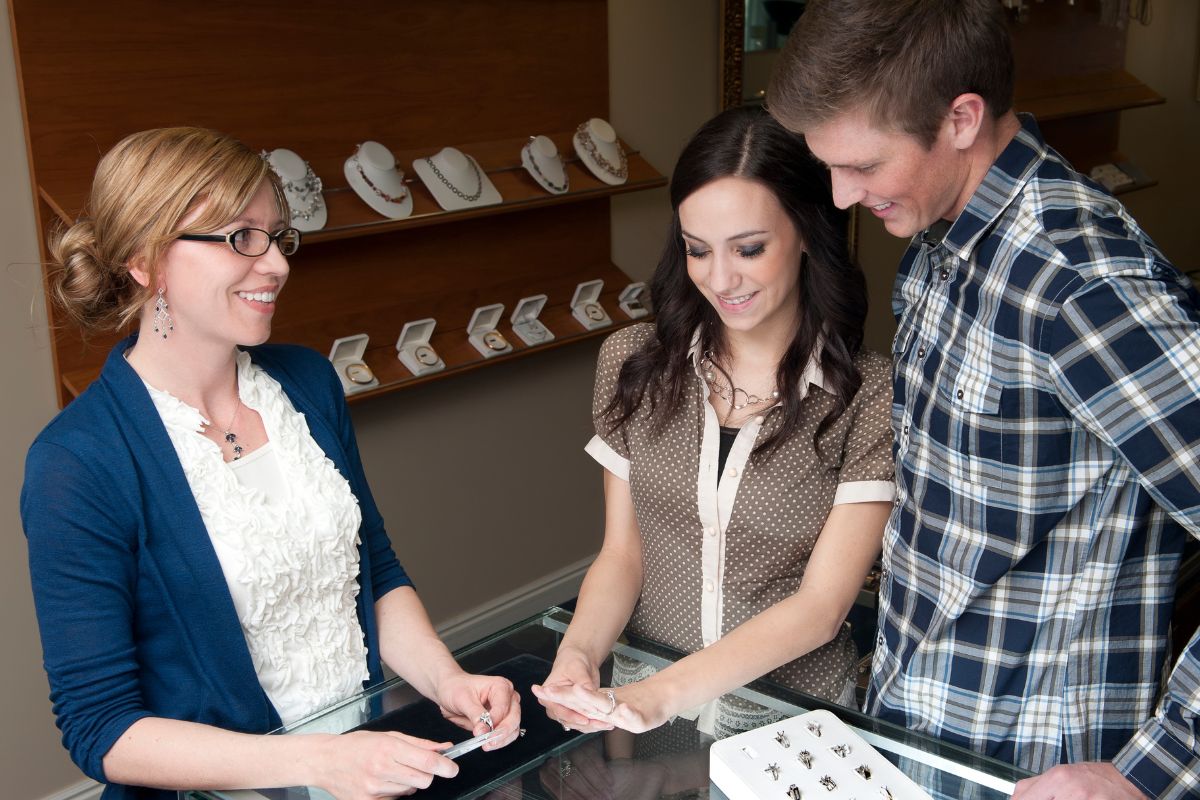
In my experience, 9 carat diamonds exemplify both opulence and rarity, standing out not just in size but also in their valuation metrics.
Let's explore the unique aspects of these large diamonds and see how they compare to their smaller counterparts.
| Aspect | Description |
|---|---|
| Size | Considered relatively large for a diamond, offering impressive presence and visual impact. |
| Weight | Heavier than smaller carat weights, adding to the perceived value and substantiality of the diamond. |
| Presence | Notable presence on the finger or in jewelry settings, making it a popular choice for statement pieces. |
| Cost | Generally more affordable compared to higher carat weights, offering a balance between size and price. |
| Brilliance | Capable of exhibiting exceptional brilliance and sparkle, especially when well-cut and polished. |
| Versatility | Suitable for various jewelry designs, including engagement rings, earrings, pendants, and bracelets. |
The Rarity and Appeal of Large Diamonds
I've found that the market considers diamonds above a certain carat weight, like those that are 9 carats, extremely rare. Their exceptional size elevates their status among loose diamonds, making them highly sought after.
A 9 carat diamond stands out due to its significant carat weight and the striking visual impact it creates.
Due to their rarity, such diamonds often serve as the centerpiece in high-end jewelry, capturing the attention and admiration of diamond enthusiasts.
The rarity is directly linked to their value, with prices starting around $19,000 per carat and skyrocketing depending on factors like color, clarity, and cut.
Comparing 9 Carat to Smaller Carat Weights
When comparing a 9 carat diamond to smaller carat weights, the price per carat generally increases exponentially.
This is because large diamonds like these are found less frequently in nature.
For instance, while 1 carat diamond prices start at a more accessible point, a 9 carat diamond can command a price that is much higher than simply nine times that of a 1 carat diamond due to its increased rarity and the market's demand for large carat loose diamonds.
Additionally, when considering diamond carat weight, diamonds of fancy shapes may often be priced differently.
For example, certain shapes such as round brilliant tend to maximize a diamond's inherent brilliance, which can influence the price and uniqueness of a 9 carat diamond in those shapes.
Expert Tips for Diamond Care and Maintenance

To keep a diamond sparkling, I prioritize regular cleaning.
I create a solution with mild dish soap and warm water. Then, I soak my diamond ring for about 20 to 30 minutes each week. This method effectively removes oils and residue without harming the stone.
I avoid using harsh chemicals or abrasive materials on my jewelry.
For a deeper clean, I mix equal parts Windex and hydrogen peroxide. I find that this solution is safe for the diamonds, but I always ensure that the metal setting won't be damaged by these substances.
Basic Do's and Don'ts:
- Do: Use a soft toothbrush to gently scrub the diamond after soaking.
- Don't: Clean with alcohol if the ring includes plastic, copper, or acrylic components.
Routine Checks:
I also inspect my diamond's setting regularly to ensure the stone is secure.
It's vital to check for any loose prongs or metal wear, as these can lead to a diamond becoming loose or even falling out.
Professional Maintenance:
Finally, I recommend an annual check-up with a professional jeweler. They can inspect the diamond and setting for any issues that may require repair, ensuring the longevity and brilliance of the ring.
Also Read
Frequently Asked Questions
In evaluating the worth of a 9 carat diamond, multiple factors come into play. My insights below deconstruct the elements that define its value.
What factors influence the value of a 9 carat diamond ring?
The value of a 9 carat diamond ring isn't determined by size alone. Its worth is also shaped by the diamond's color, clarity, cut, and the current market demand.
How does diamond clarity affect the price of a 9 carat diamond?
Diamond clarity is a pivotal aspect; it rates the presence of internal inclusions and external blemishes. A 9 carat diamond with minimal flaws, rated as VS2 or higher in clarity, can significantly increase in value.
In terms of size, how does a 9 carat diamond compare to smaller carat weights?
A 9 carat diamond is rarer and, therefore, exponentially more valuable than smaller carat weights. The price per carat rises steeply as the diamond's weight increases due to its scarcity.
How do market conditions affect the price of a 9 carat diamond?
Market conditions, including supply and demand dynamics, economic factors, and consumer preferences, heavily influence the price. A 9 carat diamond's price can fluctuate with these ever-changing conditions.
What is the significance of cut quality in the valuation of a 9 carat diamond?
The cut quality of a diamond affects its brilliance and fire. For a 9 carat diamond, an exceptional cut grading ensures maximum light performance, thereby enhancing its value.
Are there notable price differences for different types of 9 carat diamonds, such as chocolate diamonds?
Yes, the type and color of a 9 carat diamond contribute to its valuation.
For instance, chocolate diamonds are often less expensive than their white counterparts. This is due to differences in rarity and consumer demand.
Checkout some of our top collections:
Leave a comment
Please note, comments must be approved before they are published.
